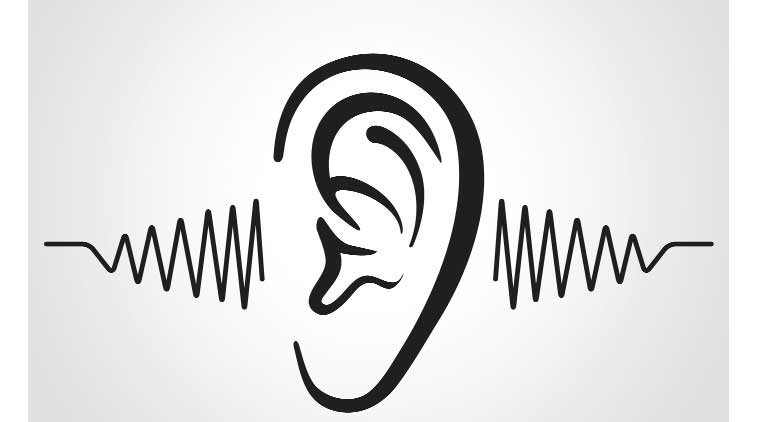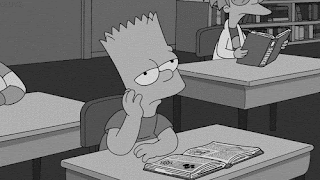The title sequence we are creating is a thriller called "Doppelganger" showing the growing mental and compulsive issues of a young girl.......
Monday, 31 October 2016
SHOT BY SHOT EVALUATION
- We manage to remake most shots of collateral and make it similar to one another.
- Our editing went very well as we was more confident and had more practise we was able to do more effects and hide our mistakes when filming such as flipping the clips to make sure the characters come out from different directions.
- Manage our time better as we had to rush thus we couldn't include many things we wanted to such as titles when editing.Even though Collateral didn't have any titles it would've made our remake more unique and effective, standing out from anyone else which we didn't manage to so. We also didn't get to redo some our clips so that we could fix our mistakes.
- I would spend more time planning and thoroughly discussing how we was going to film everything and our shots so that we had a clear structure to follow.
blogging health check 1
MARK: 16
GRADE: B
Self-Assessment
What went well: Received good feedback and a good mark which could still be improved. Completed most blogs to my best effort.What i can improve: I need to work on my time management as i didn't finish everything i wanted to by the deadline which could've cost me marks. To use more different media to make my blog more unique and appealing. To include more analysis and depth in my blogs.
Wednesday, 26 October 2016
Analyse the use of sound in one film opening.
THRILLER
In the film Saw title sequence it uses diegetic and non diegetic sounds to compliment each other in a way that heightens the audience's experience and causes more excitement. The intense beat of the background music (non diegetic) mimics the sound of a heartbeat. This causes tensions and anxiousness to rise, as this makes the audience feel as if the sound is there own heartbeat, rising due to fear. This makes the audience feel as if they're part of the film.The use of this beat creates a tense and unrelaxed atmosphere, causing the audience to feel alert and attentive. The screeching sound effects as well as the sound of malfunctioning technology suggest that this film is from a time where technology was not at it best, which explains the low quality sound. This use of diegetic sounds further add to the frighting atmosphere. The sound of screams are genre signifiers as screams are outbursts due to shocks or pain, two aspects that are present in all thriller/horror films. The suddenness of the screams will also cause the audience to be shocked and surprised. The use of volume change from low to high, connote lack of control, implying that whilst watching this film, the audience will have no control over their emotions.
Tuesday, 25 October 2016
Sound is a very important and natural element of life. Sound is speech, music, voices, bumps, screeches and so much more. It is anything we hear. In media, sound is a very essential aspect that can be used to establish plot and genre. A combination of sounds is called a soundscape, this can include music, dialogue, footsteps, crashes, whistles, the sound of a cat mewing etc - all together. It is the overall sound of a environment.
However the process of creating the sound of any environment is called sound design. This is the making, creating, recording and mixing of sound you'd normally hear, in order to emphasise and accentuate it.
Another popular use of sound in media such as film is 'suspending disbelief.' which is the use of soundscape in order to make you feel as if you're in/involved in the film. This creates a sense of escapism and makes the audience forget that they're actually watching the film rather than in it, heightening their experience and making it more exciting.
A Film without sound ? Boring, tiring, slow paced, non intriguing.
A Film with sound? Exciting, more energetic, more understandable, engaging.
TWO TYPES OF SOUND
There are two types of sound, diegetic sound and non diegetic sound. Diegetic sound is everything we hear around us, it is basically the sound in an environment. An example of diegetic sound is dialogue or the sound of footsteps. Diegetic sound in a film is the all the sounds the actors can hear as well as the audience. Non diegetic sound is the opposite, it is the sound that only the audience can hear, not the actors. This can be a theme tune or just general background music. This type of sound in edited into a film using technology. With only diegetic sound in a film, no suspense or tension is palpable. The film is very slow paced and not engaging, it does not give you an idea of how to feel and does not create a sense of escapism or excitement. With only non diegetic sounds the film does not make sense at all, it has no narrative and no sense of direction. It makes the film less enjoyable as the audience are having to work out what is happening. It is clear that both sound elements pay compliments to each other in many ways. With both non diegetic and diegetic sounds used together in a film, tension and suspense is added making the audience feel immersed and excited. It intensifies the audience's experience and makes them feel as if they're part of the film.
Sunday, 23 October 2016
Friday, 21 October 2016
SUMMARISE YOUR FINDING OF GENRE CONVENTIONS IN FILM OPENINGS.

CODES AND CONVENTIONS - elements that are typical in a genre.
Having researched and analysed title sequences from the genre Horror/Thriller, I have concluded that there are many codes and conventions within them. One aspect I noticed within the three title sequences, was the editing. In horror/thriller films, when it comes to editing and effects, one that is commonly used is twitches and blurring. This aspects causes the illusion of uncertainty and fear. The blurring aspects also creates the illusion of blindness, making the audiences feel anxious as they are "blind" to what will happen next. This along with calming music that comes off as creepy considering the circumstances create fear. A major aspect that is featured in all horror/thriller films is the building of tension. This can be done in two ways. One way is through the speeding up of scenes, dovetailing into one another quickly or the slowing down of scenes. Each method makes the audience feel unaware of what is next to come. Also precise colours are used with connotations such a death, murder, mystery. These colours being red, black and white. Another typical aspect of horror/thriller films are the use of sudden sound, to shock the audience and also to confuse them. Often there will be sudden screams, crashes etc that most of the time is not affiliated with the current scene, this once again causes audience to become bewildered, anxious and quite frightened.
WHAT IS TARGET AUDIENCE?
A target audience is material such as a film, product or music
made specifically catered for a certain group's liking and interest. An example
of this would be a new chick flick film and the target audience being women.
A film having a target
audience is a very important aspect as everyone has different tastes and
interests. By making a film whilst not considering what type of people will be
interested in it, you risk losing a lot a of money and low views, as a small
amount of people may only like this certain genre or a certain large group of
people may not be interested in the plot and theme. It is very important
to differentiate between groups of people and their likes in order for products, films, music etc to be successful.
PRIMARY - the audience that are directly involved and interested.
SECONDARY - audience that involved however not interested e.g. parents viewing a children's film in the cinema as their children are unable to go and watch it alone.
TERTIARY - Involved due to curiosity or the knowing of a certain product.
One audience that I feel appeals to the genre Teen Drama is young females from the age range of 14 - 18, as teen drama I usually set in high school with relatable plots.
Thursday, 20 October 2016
Importance of Sound
The important of Sound In Film
 Sound is used in film to establish tone, atmosphere and to help give the audience clues about the plot, characters or to identify he Genre of the film. It is also used to help 'suspend disbelief' to create realism for the viewer and heighten their experience of the film.
Sound is used in film to establish tone, atmosphere and to help give the audience clues about the plot, characters or to identify he Genre of the film. It is also used to help 'suspend disbelief' to create realism for the viewer and heighten their experience of the film.According to George Lukas, director of Star wars franchise:
'Sound is 50%'
But what is the real definition of sound and soundscape.....

So in other words, sound is anything we hear in relation to film and the soundscape is the overall sound environment.
Theres 2 main types of sound:
Diegetic Sound- Sound is called diegetic when it relates to what the characters are doing and sounds realistic. For example, two characters talking or the sound of a door opening.
Non diegetic sound- Sound is said to be non diegetic when its not directly from the film nor realistic but compliments the film such as sound effects or music.
Both diegetic and non diegetic sound is very important and essential in a film as they make it more engaging and realistic. It draws the reader in making the film more intense and builds up suspension. For example, in the clip below sound makes this war scene much more intense and effective.
Now play the same scene but muted without sound....
It doesn't have the same effect as it did with sound, it makes it less tense and more tedious.Its no longer engaging as it used to be.
To use sound effectively and to the best you have to have the right mixture of diegetic sound and non diegetic sound.
- Although some films might only play a soundtrack during the title sequence of a film, it is very rare for a film not to layer a musical score, sound effects of some kind and match the beat of the sound with an edit of the image. The effect of this layering or synchronisation helps to make the sound and image work together and appear seamless, thus heightening what we are both hearing and seeing.
Audience Research
Interviews
 Continuing on my research i conducted a few interviews to find out a better idea what film genres the general public prefer. We've decided that our target audience for our film will be young adults, teenagers as thats how old we are therefore it will be much easier to be able to relate to them and know what would draw them in. So with teenagers and young adults being our main target audience we would have to focus on genres more like action, comedy and drama as they're most common in that category. To be honest i think this would get us ahead of everyone else now as we know what type of genres we should focus on that would engage our target audience the most.
Continuing on my research i conducted a few interviews to find out a better idea what film genres the general public prefer. We've decided that our target audience for our film will be young adults, teenagers as thats how old we are therefore it will be much easier to be able to relate to them and know what would draw them in. So with teenagers and young adults being our main target audience we would have to focus on genres more like action, comedy and drama as they're most common in that category. To be honest i think this would get us ahead of everyone else now as we know what type of genres we should focus on that would engage our target audience the most. Research statistics references
https://www.statista.com/statistics/188658/movie-genres-in-north-america-by-box-office-revenue-since-1995/
OUR 3 MAIN FILM GENRES:

Comedy
Action
DRAMA
Interviews
1st interview
2nd Interview
BFI Statistics
In order to pick the genre that would get us the best possible outcome of a film i had to do a lot of research to get myself familiar with different film genres, box offices and the preferences amongst different audience types.
These were my findings after my research...
Genre Conventions
Genre Conventions- all the little parts of a genre such as scenery, characters similarities and story line that allow us to distinguish between genres. Most genres have elements that the audience expects as they have been used several times in previous films from that genre and has now become a norm for it.

A few examples of different Genre Conventions :
The conventions in a horror film is that:
- Dark, gloomy atmosphere and mood creating a fearful and isolated feeling within the audience.
- Disturbing, low pitch sounds to create tension and suspense.
- Death/supernatural/dark plots and story lines
- Vulnerable character, brave heroic character and the villain.
- Contrapuntal music

The conventions in a comedy film are:
- Usually bright settings and locations are usually in social events.
- Sound effects to create the humorous effect and emphasis on certain scenes.
- Light natural lighting to create the realistic effect. Scenes are usually shot in daylight.
- The use of props in Comedy films are very typical to create a specific effect.
- Idiotic characters and a educated character to pick out the others mistakes.

Audience Research Activity
Target Audience:
Is a particular group of people (of age/ethnicity/gender etc.) by which a film is aimed at.
Primary: Main audience who have a direct interest in the product.
Secondary: Product not designed for them specifically, but they'll watch the movie to accompany children, friends and family
Tertiary: Slightly interested in product due to something included in it- wouldn't otherwise watch/read it.
- Recognising your target audience before filming is very important as they decide what type of content you'll produce and how you'll produce it.
- For example; if you're producing a film opening aimed at children it'll be different to a film opening aimed at male adults.
- Your target audience has to relate and engage with your film.
15-24
The usual target audience for horror films are males aimed 15 to 24. This is because teenagers and young adults enjoy thrills and is more likely to excite them. Horror usually has such a young target audience as the graphic images dosent frighten them and they actually enjoy however an older target audience would be put off.Fantasy is a fiction genre that uses magic or other supernatural elements as a main plot element, theme, or setting. Many works within the genre take place in imaginary worlds where magic and magical creatures are common. Statistics show that fantasy genre is more liked by young females usually aged around 16 to 20.
Fantasy Research:

Action is one of the most popular film genres, both older and younger generation enjoy watching action films and are drawn to them. Typically the target audience for action films would be young males for the thrills and excitement. Action films are usually seen as stereotypically masculine films that men enjoy. This includes, explosions, gun fights, car chases and much more. But, recently research has shown that females also seek for those thrills and enjoy action films more now.
Subscribe to:
Comments (Atom)







































